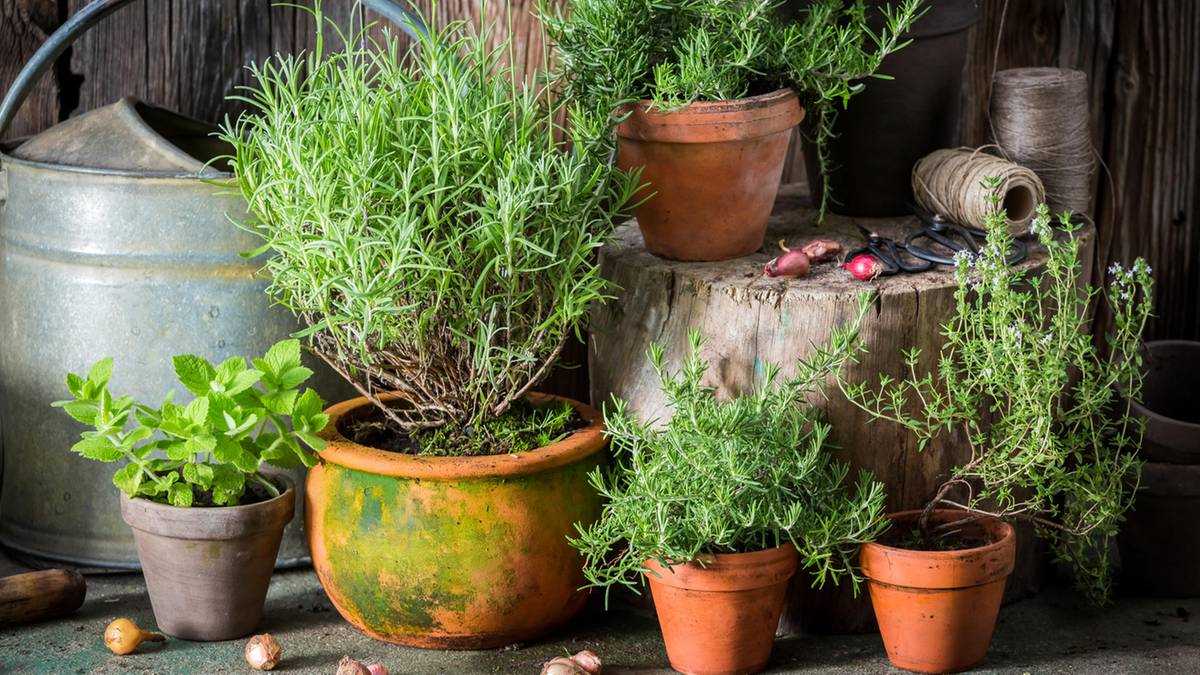Planting herbs: time
If you plant your herbs outdoors, there are a few things you need to consider:
- Soil frost can still occur until the end of April or early May, so you should only start growing herb plants after this time frame.
- Most of the time, cold air (the so-called sheep cold) breaks in again in mid-June, which can harm your plants. It is best to cover sensitive varieties with a fleece cover up to this point.
Planting herbs: substrate
- Herbs develop a stronger aroma in poor soils. Therefore, do not use (pre-fertilized) potting soil to plant herbs, as this does not meet the requirements for herbs.
- Instead, herbs in pots or pots need special herb soil (pay attention to organic quality) or normal garden soil in the bed, which is permeable and has a normal nutrient content. Only in the pot can the soil be a little richer in nutrients.
- Depending on the type of herb, the substrate can also be mixed with sand, horn shavings, limestone gravel or compost to help it thrive.
- Never use mineral-chemical fertilizers for herbs. In the bed you can, however, once a year Add compostbefore the culture starts. Otherwise, offer organic mixed fertilizers or fertilizers with horn meal should the growth slow down. In the pot, however, are for example diluted herbal yeast a suitable fertilizer that can be used every few weeks. Watery extracts from compost can also be used here.
Planting herbs: how it works
To plant herbs you need Young plantsthat were either brought forward by hand or come from the trade. tip: Herbs from the supermarket often shrink quickly because they were raised too quickly and are more susceptible. Garden centers and garden centers, on the other hand, have higher quality plants.
Important: Always pay attention to that respective location specifications the herbs and align your herb garden or tub accordingly. A sunny locations need thyme, lavender or basil, for example. In contrast, dill, fennel and parsley thrive in partial shade.
- The bed or the bucket should free of weeds and stones his. Loosen up the substrate or soil.
- Place the herb pots in a tub or bowl full of water so that all air escapes and soak them up nicely.
- If you want to use the plants in the bucket, you should have one under the ground and above the water drain drainage invest. This can consist, for example, of shards of clay, expanded clay or gravel. This is how you prevent waterlogging.
- Herbs growing in a sunny spot however, dry faster out. You can counteract this by placing a layer of sand in a clay or terracotta container and then planting the plants in soil there. Both the sand and the clay or terracotta store the moisture. A layer of bark mulch later on the earth also prevents drying out.
- Dig in for each herb seedling hole and note that the individual plants are specific distance to other plants.
- Remove the herb growing pots and insert the plant. Fill the hole with earth, press this firmly. Then just water and your herb bed is ready!
- Then regular Don't forget to pour and always remove dried leaves or stems.
tip: Harvest the herbs in the morning as they are the most ethereal flavoring at this point.
Planting herbs: Which herbs go together
- When planting, you should always pay attention to which herbs harmonize together in a bed or tub. They then favor growth and protect each other from diseases or fungal infections. In addition, with a clever combination, pests can be repelled naturally, for example if a plant attracts certain insects in the garden that fight the pests on another neighboring plant.
- Some may get along Perennial herbs not with annual ones. The perennials love persistence and therefore do not want to have another plant next to them all the time!
Annual herbs include e.g. B .:
- dill
- basil
- marjoram
- rosemary
- chamomile
- Nasturtium
- parsley
Perennial herbs include e.g. B .:
- oregano
- sage
- Caraway seed
- tarragon
- thyme
- chives
- fennel
- Lemon balm
However, very good bed neighbors in the garden are:
- Basil & rosemary
- Sage, savory, oregano
Which plants need a lot of space?
There are certain herbs that do not like a direct neighborhood: you should therefore use them in a single pot or at a sufficient distance from the next plant. The following plants require a particularly large amount of space:
- tarragon
- Melissa
- Lovage
- sage
- Lovage
- Wormwood
- mugwort
Where can you plant herbs?
- Balcony railing
- bucket
- Clay pots
- Hanging traffic light
- Bed
Tips for the most important culinary herbs
- basil: Sunny, warm place; much water
- chives: prefers penumbra and its own pot; keep soil moistured
- thyme: Sunny, warm location; poor, sandy and dry soil
- Parsley: nutritious, moist soil in partial shade
- tarragon: sunny, warm place; damp soil
- dill: takes up a lot of space and thrives best in your own pot or with enough space
Looking for more tips and instructions on gardening and planting? Here we explain how to repot a plant. Here we have suggestions for the indoor garden and here you can find out how you can multiply rosemary.
If you want to exchange ideas about plants with others, have a look at our community.
